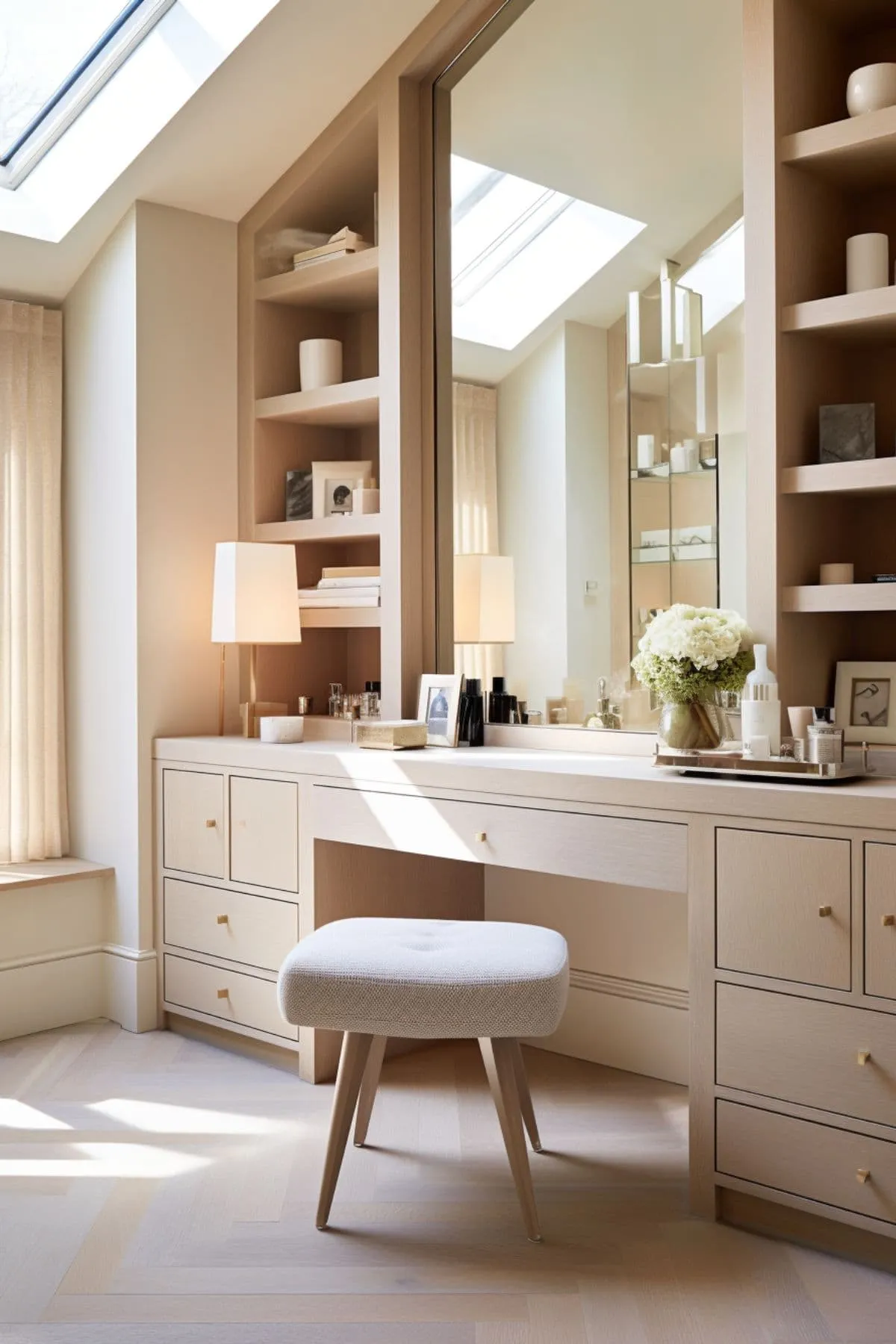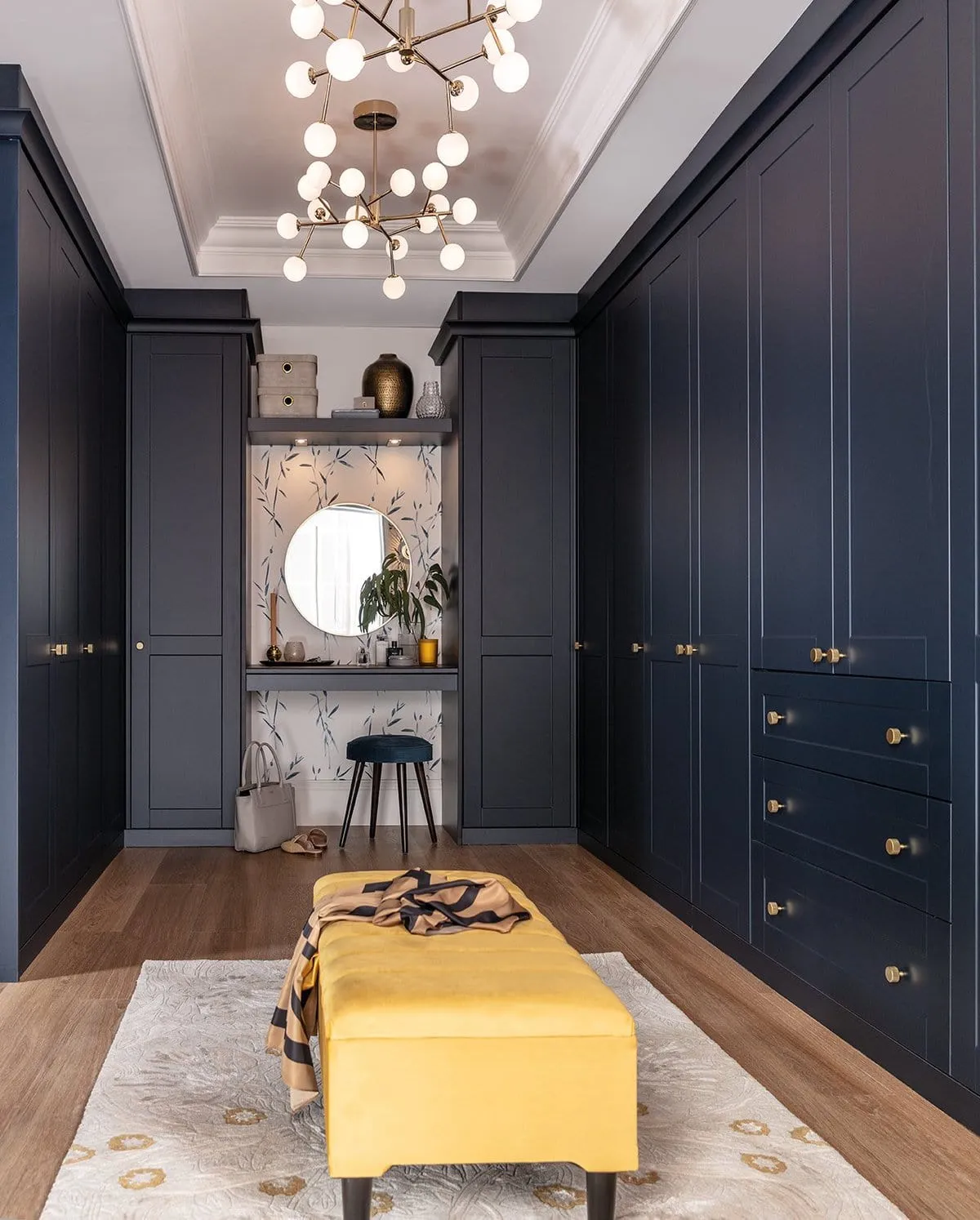Dressing Table Design And How hey Change The Looks Of Your Bedroom
Dressing tables are more than just functional pieces of furniture; they are essential components of bedroom decor that can enhance the overall aesthetic and provide a dedicated space for personal grooming. Whether you’re aiming for a minimalist look or an opulent statement piece, the design of a dressing table can significantly impact the ambiance of your bedroom. This comprehensive guide explores various aspects of dressing table design, from styles and materials to functionality and placement.
1. Understanding Dressing Table Styles
Classic/Vintage: Classic or vintage dressing tables often feature intricate details such as carved legs, ornate handles, and rich finishes. These designs evoke a sense of timeless elegance and are typically crafted from wood. A mirror with a decorative frame often accompanies these pieces, enhancing their traditional charm.
Modern/Minimalist: Modern dressing tables focus on clean lines, simplicity, and functionality. Often made from materials like glass, metal, or lacquered wood, these tables emphasize a clutter-free aesthetic. Built-in lighting and sleek, handle-less drawers are common features.
Rustic: Rustic dressing tables bring a touch of the countryside into your bedroom. Made from reclaimed or distressed wood, these pieces often highlight natural textures and finishes. Rustic tables might feature wrought iron accents and simple, sturdy construction.
Glam: Glam dressing tables are all about luxury and opulence. They might feature mirrored surfaces, metallic finishes, and plush seating. These tables often come with ample storage to accommodate a wide array of beauty products and accessories.
2. Material Choices and Their Impact
Wood: Wooden dressing tables are versatile and can fit into various decor styles depending on the type of wood and finish. Oak, mahogany, and walnut are popular choices for their durability and classic appeal. Painted wood options can add a pop of color to the room.
Metal: Metal dressing tables, often made from stainless steel, iron, or brass, are durable and can lend a contemporary or industrial look to the bedroom. These tables might feature glass tops or be paired with wooden elements to soften their appearance.
Glass: Glass dressing tables add a touch of sophistication and are perfect for modern decor. They can make a small room appear larger due to their transparency. However, they require regular maintenance to keep them smudge-free.
MDF and Particleboard: For budget-conscious shoppers, MDF (Medium-Density Fiberboard) or particleboard tables offer a cost-effective alternative to solid wood. These materials can be finished with veneers or laminates to mimic the look of more expensive woods.
3. Functional Features to Consider
Storage: Adequate storage is crucial for keeping your dressing area organized. Look for tables with drawers, shelves, or compartments that can hold makeup, jewelry, and other personal items. Some designs include built-in organizers or dividers.
Mirrors: A dressing table is incomplete without a mirror. Options range from attached mirrors to separate, adjustable ones. Consider tri-fold mirrors for a full view or lighted mirrors for better visibility.
Seating: Comfortable seating is essential for a functional dressing table. Stools, benches, or chairs can be chosen based on the height of the table and the overall decor. Upholstered seats add a touch of luxury and comfort.
Lighting: Proper lighting is essential for a dressing table. Built-in LED lights around the mirror can provide even illumination, while table lamps or pendant lights can add to the ambiance. Natural lighting from nearby windows can also be beneficial.
4. Placement and Integration in Bedroom Decor
Placement: The positioning of the dressing table is key to both functionality and aesthetics. Place it near a window for natural light or in a corner to save space. Ensure there is enough room to comfortably use the table and open drawers or cabinets.
Integration with Decor: The dressing table should complement the existing bedroom decor. Match the table’s style and color with the bed, wardrobes, and other furniture pieces. Use accessories like vases, picture frames, or decorative trays to tie the look together.
Space Utilization: For smaller bedrooms, consider corner dressing tables or wall-mounted designs to save space. Mirrored dressing tables can make the room appear larger. Multi-functional tables that double as desks or vanities can also be practical solutions.
5. Customization and Personal Touches
Personalization: Adding personal touches to your dressing table can make it feel more inviting. Incorporate items that reflect your personality, such as favorite books, artwork, or collectibles.
DIY Customization: For a unique piece, consider customizing your dressing table. Paint or stain the wood to match your color scheme, swap out hardware for a different look, or add decorative elements like stencils or decals.
Thematic Decor: If your bedroom follows a specific theme, ensure your dressing table aligns with it. For example, a coastal-themed room might feature a whitewashed table with nautical accents, while a bohemian style might include a vintage table adorned with eclectic decor.
Beautiful Dressing Table Designs












Conclusion
A well-chosen dressing table can elevate the style and functionality of your bedroom. By considering the various styles, materials, functional features, and placement strategies discussed in this guide, you can select a dressing table that not only meets your practical needs but also enhances the overall aesthetic of your personal sanctuary. Whether you prefer the charm of vintage designs or the sleekness of modern minimalism, there is a perfect dressing table out there to complement your bedroom decor.
